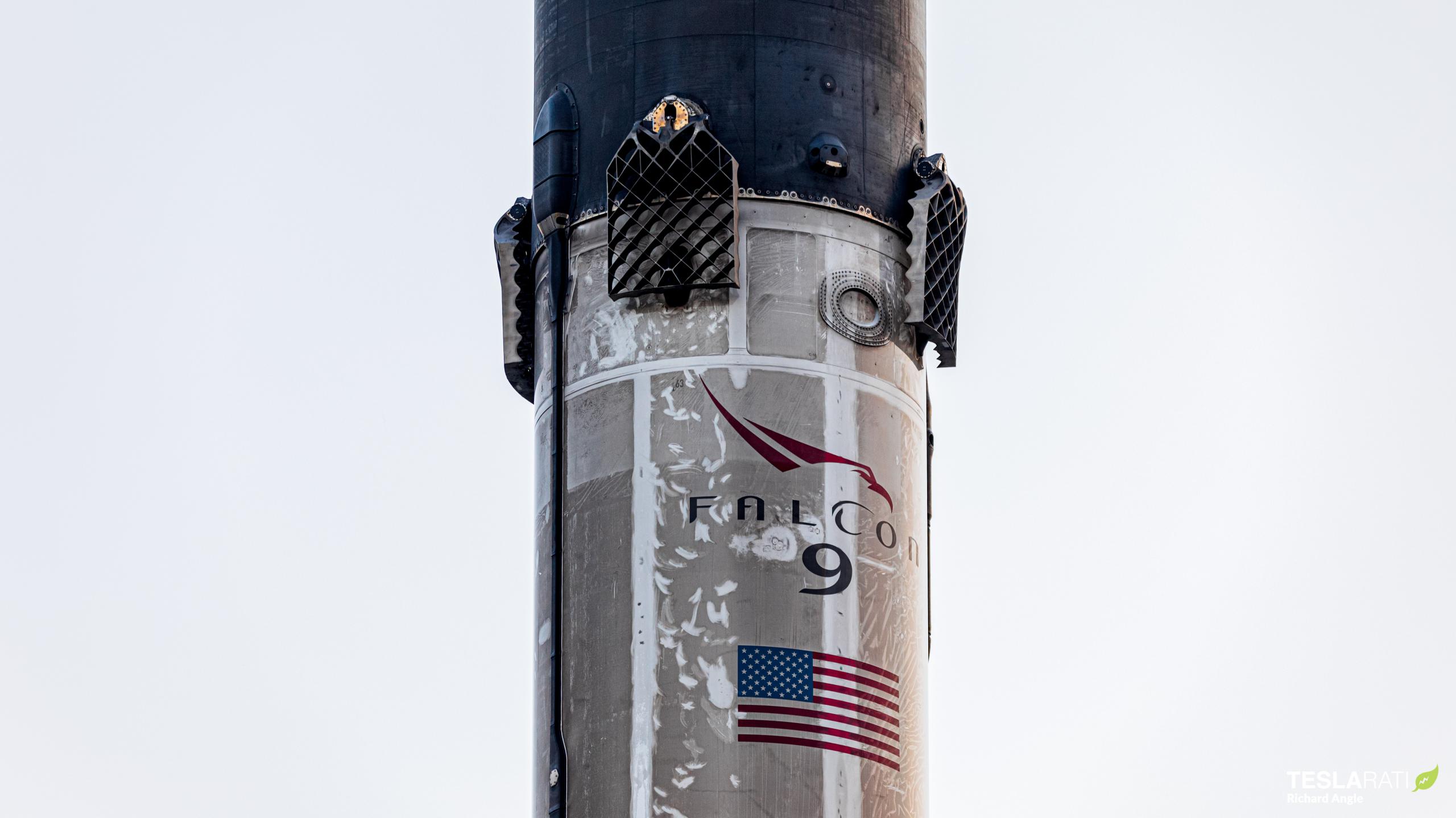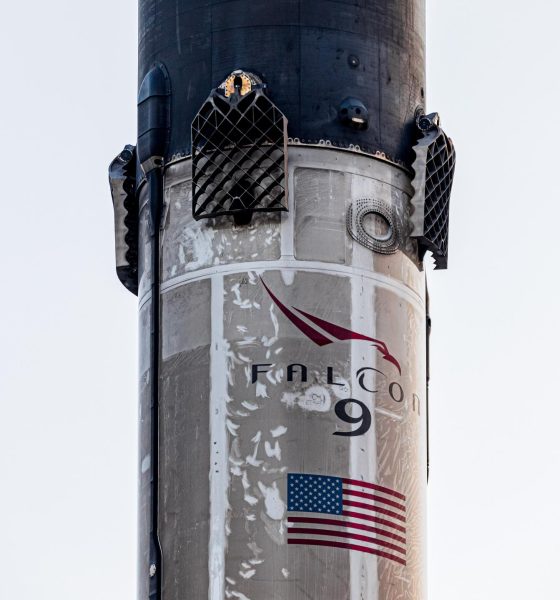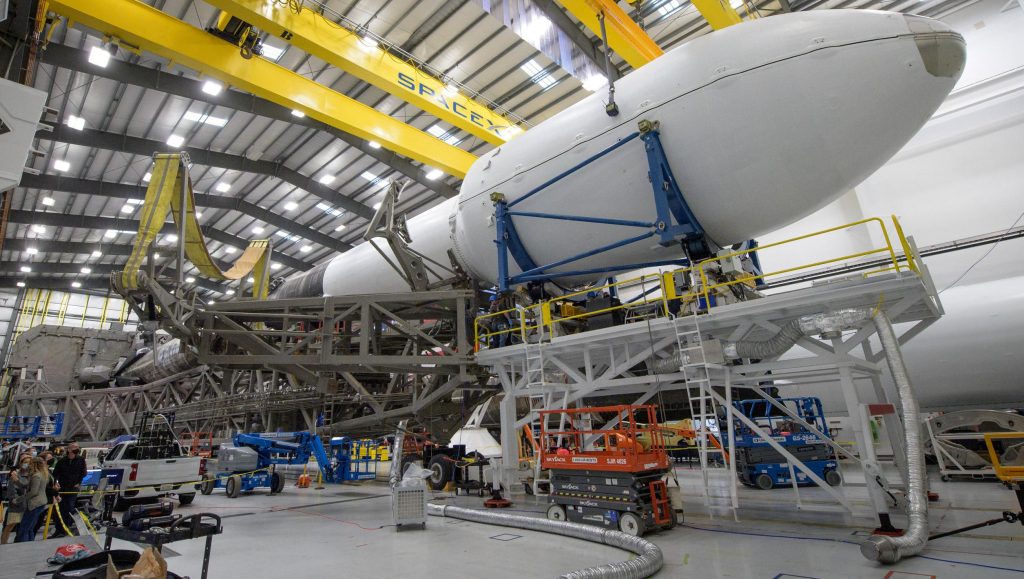

News
SpaceX rocket sails into California port after interplanetary launch
The first SpaceX Falcon 9 booster to help launch a payload directly into interplanetary space has safely arrived at a California port.
On November 24th, Falcon 9 B1063 lifted off from SpaceX’s West Coast SLC-4E launch site for the second time in about a year, successfully sending an expendable upper stage and NASA’s Double Asteroid Redirection Test (DART) spacecraft on their way to interplanetary space. Aside from marking the first time SpaceX has sent a paying customer’s functional spacecraft beyond the gravity ‘well’ of the Earth-Moon system, SpaceX did so with a flight-proven Falcon booster – a first for NASA’s Launch Service Program (LSP).
For Falcon 9 B1063, it was also the first time the booster performed a landing and recovery in the Pacific Ocean, touching down on recently-relocated drone ship Of Course I Still Love You (OCISLY) about 650 km (~400 mi) southeast of the central California coast.
Towed behind tug Scorpius, Falcon 9 B1063 sailed into Port of Long Beach (adjacent to Port of Los Angeles) on drone ship OCISLY a brisk two and a half days after touchdown. SpaceX’s oldest and most storied drone ship, OCISLY supported 52 Falcon booster recovery attempts off the East Coast (45 successful) before the company chose to transfer the vessel to its West Coast recovery fleet. In its relatively old age, OCISLY is underpowered and relatively finicky to operate and maintain in comparison to newer ships Just Read The Instructions (JRTI) and A Shortfall of Gravitas (ASOG). That makes it a perfect fit for SpaceX’s California launch facilities, which are also relatively old and only capable of supporting one Falcon launch per month.
In comparison, JRTI and ASOG are designed to support at least one or two Falcon booster landings every two weeks, while SpaceX’s more modern LC-39A and LC-40 Florida pads have both supported two back-to-back Falcon 9 launches in ten days or less. On the other hand, SLC-4E’s record turnaround is 36 days – almost four times slower – and SpaceX’s best-case goal for the recently reactivated pad is to average one West Coast launch per month. Perhaps due to Starlink production shortages and/or issues with the new V1.5 satellite design, it’s looking increasingly unlikely that SpaceX will be able to get close to that pace in 2021.

There are still some reasons for optimism, though. Even if SpaceX were to ‘merely’ tie its previous 36-day Vandenberg turnaround record, that would technically preserve the possibility of a launch on December 30th or 31st. More importantly, photos from NASA’s DART launch campaign recently revealed that SpaceX already has an entire second Falcon 9 rocket fully integrated (sans payload) inside its SLC-4E hangar. That rocket – Falcon 9 booster B1051 with a new upper stage already installed – was originally scheduled to launch Starlink 2-3 (polar-orbiting laser-linked satellites) on October 17th.
Several weeks of delays – most likely involving the mission’s Starlink payload – precluded an October launch and ultimately pushed the launch to December once it came within four or five weeks of NASA’s DART mission, which took priority. With any luck, SpaceX has fixed whatever issues grounded the mission in the last six weeks, potentially enabling a West Coast Starlink launch just one month after DART – around the last full week of December.

News
Tesla FSD fleet is nearing 7 billion total miles, including 2.5 billion city miles
As can be seen on Tesla’s official FSD webpage, vehicles equipped with the system have now navigated over 6.99 billion miles.

Tesla’s Full Self-Driving (Supervised) fleet is closing in on almost 7 billion total miles driven, as per data posted by the company on its official FSD webpage.
These figures hint at the massive scale of data fueling Tesla’s rapid FSD improvements, which have been quite notable as of late.
FSD mileage milestones
As can be seen on Tesla’s official FSD webpage, vehicles equipped with the system have now navigated over 6.99 billion miles. Tesla owner and avid FSD tester Whole Mars Catalog also shared a screenshot indicating that from the nearly 7 billion miles traveled by the FSD fleet, more than 2.5 billion miles were driven inside cities.
City miles are particularly valuable for complex urban scenarios like unprotected turns, pedestrian interactions, and traffic lights. This is also the difference-maker for FSD, as only complex solutions, such as Waymo’s self-driving taxis, operate similarly on inner-city streets. And even then, incidents such as the San Francisco blackouts have proven challenging for sensor-rich vehicles like Waymos.
Tesla’s data edge
Tesla has a number of advantages in the autonomous vehicle sector, one of which is the size of its fleet and the number of vehicles training FSD on real-world roads. Tesla’s nearly 7 billion FSD miles then allow the company to roll out updates that make its vehicles behave like they are being driven by experienced drivers, even if they are operating on their own.
So notable are Tesla’s improvements to FSD that NVIDIA Director of Robotics Jim Fan, after experiencing FSD v14, noted that the system is the first AI that passes what he described as a “Physical Turing Test.”
“Despite knowing exactly how robot learning works, I still find it magical watching the steering wheel turn by itself. First it feels surreal, next it becomes routine. Then, like the smartphone, taking it away actively hurts. This is how humanity gets rewired and glued to god-like technologies,” Fan wrote in a post on X.
News
Tesla starts showing how FSD will change lives in Europe
Local officials tested the system on narrow country roads and were impressed by FSD’s smooth, human-like driving, with some calling the service a game-changer for everyday life in areas that are far from urban centers.

Tesla has launched Europe’s first public shuttle service using Full Self-Driving (Supervised) in the rural Eifelkreis Bitburg-Prüm region of Germany, demonstrating how the technology can restore independence and mobility for people who struggle with limited transport options.
Local officials tested the system on narrow country roads and were impressed by FSD’s smooth, human-like driving, with some calling the service a game-changer for everyday life in areas that are far from urban centers.
Officials see real impact on rural residents
Arzfeld Mayor Johannes Kuhl and District Administrator Andreas Kruppert personally tested the Tesla shuttle service. This allowed them to see just how well FSD navigated winding lanes and rural roads confidently. Kruppert said, “Autonomous driving sounds like science fiction to many, but we simply see here that it works totally well in rural regions too.” Kuhl, for his part, also noted that FSD “feels like a very experienced driver.”
The pilot complements the area’s “Citizen Bus” program, which provides on-demand rides for elderly residents who can no longer drive themselves. Tesla Europe shared a video of a demonstration of the service, highlighting how FSD gives people their freedom back, even in places where public transport is not as prevalent.
What the Ministry for Economic Affairs and Transport says
Rhineland-Palatinate’s Minister Daniela Schmitt supported the project, praising the collaboration that made this “first of its kind in Europe” possible. As per the ministry, the rural rollout for the service shows FSD’s potential beyond major cities, and it delivers tangible benefits like grocery runs, doctor visits, and social connections for isolated residents.
“Reliable and flexible mobility is especially vital in rural areas. With the launch of a shuttle service using self-driving vehicles (FSD supervised) by Tesla in the Eifelkreis Bitburg-Prüm, an innovative pilot project is now getting underway that complements local community bus services. It is the first project of its kind in Europe.
“The result is a real gain for rural mobility: greater accessibility, more flexibility and tangible benefits for everyday life. A strong signal for innovation, cooperation and future-oriented mobility beyond urban centers,” the ministry wrote in a LinkedIn post.
News
Tesla China quietly posts Robotaxi-related job listing
Tesla China is currently seeking a Low Voltage Electrical Engineer to work on circuit board design for the company’s autonomous vehicles.

Tesla has posted a new job listing in Shanghai explicitly tied to its Robotaxi program, fueling speculation that the company is preparing to launch its dedicated autonomous ride-hailing service in China.
As noted in the listing, Tesla China is currently seeking a Low Voltage Electrical Engineer to work on circuit board design for the company’s autonomous vehicles.
Robotaxi-specific role
The listing, which was shared on social media platform X by industry watcher @tslaming, suggested that Tesla China is looking to fill the role urgently. The job listing itself specifically mentions that the person hired for the role will be working on the Low Voltage Hardware team, which would design the circuit boards that would serve as the nervous system of the Robotaxi.
Key tasks for the role, as indicated in the job listing, include collaboration with PCB layout, firmware, mechanical, program management, and validation teams, among other responsibilities. The role is based in Shanghai.
China Robotaxi launch
China represents a massive potential market for robotaxis, with its dense urban centers and supportive policies in select cities. Tesla has limited permission to roll out FSD in the country, though despite this, its vehicles have been hailed as among the best in the market when it comes to autonomous features. So far, at least, it appears that China supports Tesla’s FSD and Robotaxi rollout.
This was hinted at in November, when Tesla brought the Cybercab to the 8th China International Import Expo (CIIE) in Shanghai, marking the first time that the autonomous two-seater was brought to the Asia-Pacific region. The vehicle, despite not having a release date in China, received a significant amount of interest among the event’s attendees.








